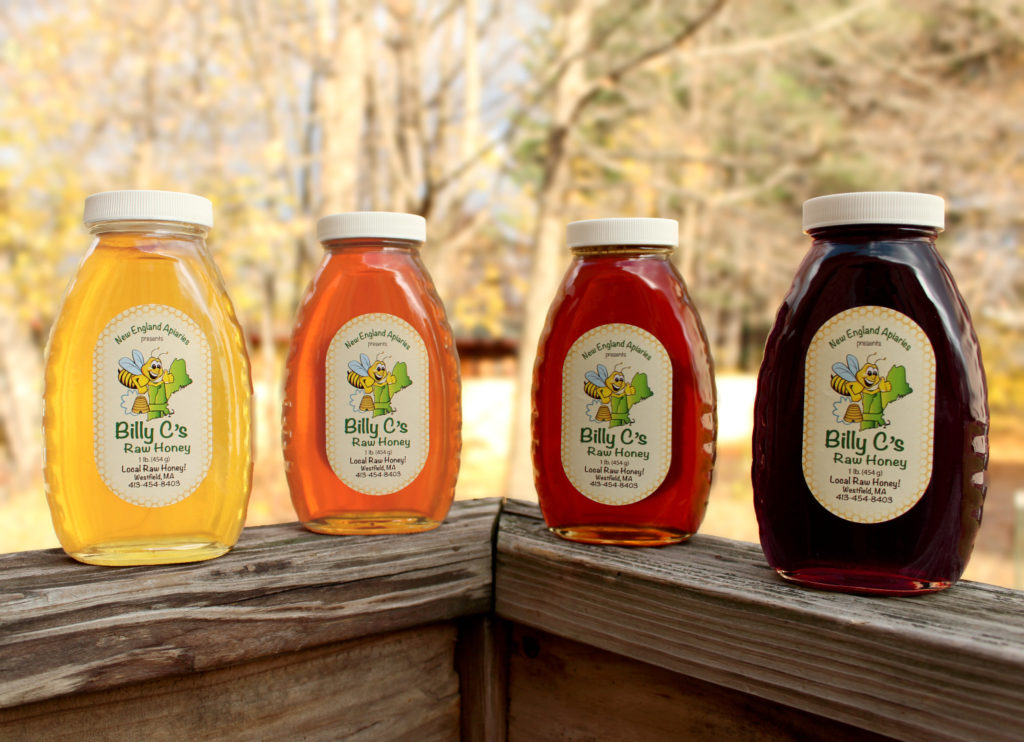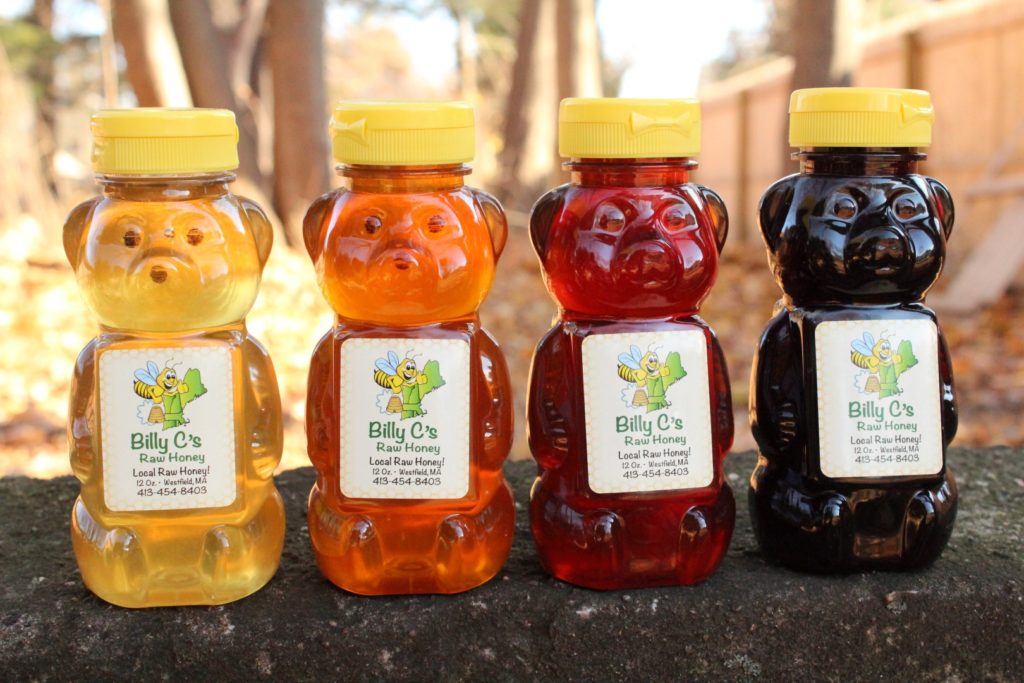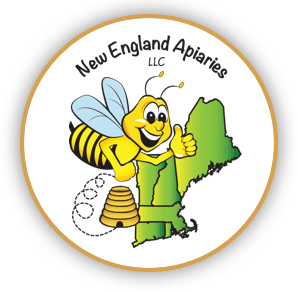Whether you are seeking a natural remedy for an allergy, looking to sweeten your tea or snack with a local delight, or sneak a squeeze of honey into your mouth for a boost of energy, Billy C’s Raw Honey is the choice for you. ALL of our honey is 100% locally produced, much of which is from our hives along the Connecticut River Valley and upstate New York.
You see, not all is what meets the eye when it comes to honey. Many folks have heard stories about smuggled Chinese honey, or honey that is diluted with corn syrup, but have you heard that what you may perceive as a local honey product may in fact be the contrary. We aren’t lying when we say “NOT ALL LOCAL HONEY IS CREATED LOCAL”

![4[1]](https://www.newenglandapiaries.com/wp-content/uploads/2021/12/41-1024x682.jpg)
There are many “back yard” beekeepers who want you to believe that the honey you’re buying from them was locally produced in their own hives. Though on the sly, they’re buying cheap honey from out of the area, packing it into jars, and slapping a label of your town on it leading you to believe that it was locally produced. Some might even deliberately deceive you and say something such as “from your local honey farm”.
But the truth is if it has no explicit claim on the label that it is indeed “local honey”, it probably isn’t!

Many people over the years have asked, “Why does your honey vary in color? This last time I purchased it, it was much lighter in color, and the time before that, much darker, and they all had a little bit of a different flavor.“
With Billy C’s honey being a small local brand, our objective is to provide the consumer with purely raw, local honey that people can choose to use for its medicinal and anti-allergy qualities.Many larger brands have the goal of providing a consistent taste and flavor, and may mix honey from the Northeast, the Midwest, Canada, South America, and Asia, in a way that creates that consistent color and taste in each and every batch.
But the truth with honey is it can vary greatly in color and taste depending on the flowers the bees visit to gather nectar from. The weather can also influence the color of the honey as well, i.e. a dry year might make a plant produce a slightly lighter or darker colored nectar than a wetter year. Generally speaking, lighter colored honey is produced earlier in the season while darker honey, much of which here in the Northeast coming from Japanese Knotweed, often mixed with goldenrod, blooms at the end of August and early September.


